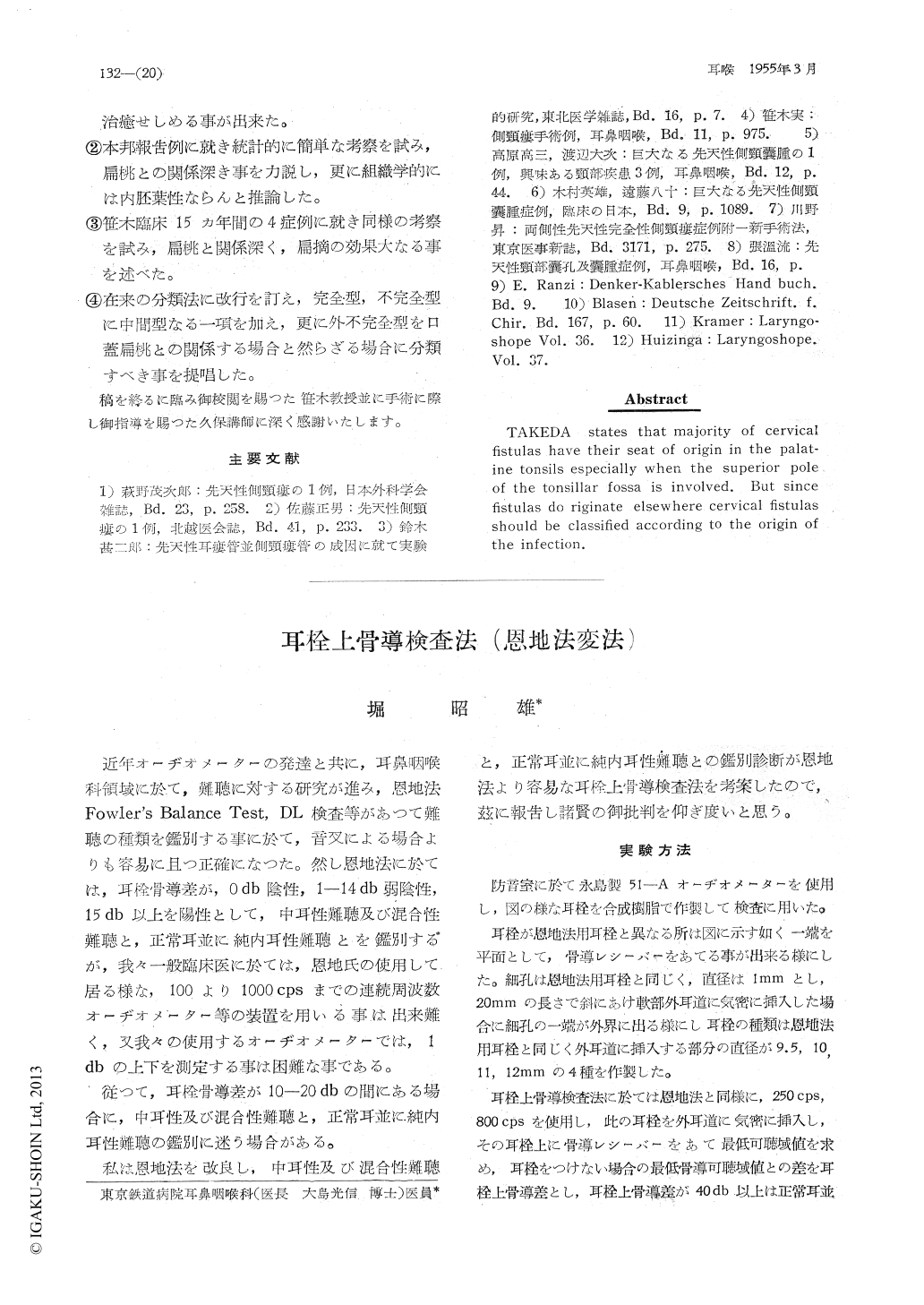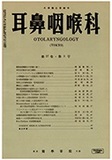- 有料閲覧
- 文献概要
- 1ページ目
近年オーヂオメーターの発達と共に,耳鼻咽喉科領域に於て,難聴に対する研究が進み,恩地法Fowler's Balance Test,DL検査等があつて難聴の種類を鑑別する事に於て,音叉による場合よりも容易に且つ正確になつた。然し恩地法に於ては,耳栓骨導差が,0db陰性,1-14db弱陰性,15db以上を陽性として,中耳性難聴及び混合性難聴と,正常耳並に純内耳性難聴とを鑑別するが,我々一般臨床医に於ては,恩地氏の使用して居る様な,100より1000cpsまでの連続周波数オーヂオメーター等の装置を用いる事は出来難く,又我々の使用するオーヂオメーターでは,1dbの上下を測定する事は困難な事である。
従つて,耳栓骨導差が10-20dbの間にある場合に,中耳性及び混合性難聴と,正常耳並に純内耳性難聴の鑑別に迷う場合がある。
HORI Proposes a new method of making a differential diagnosis of deafness, the conductive and perceptive, which in reality is a modification of that method described by Onchi. The bone conduction hearing test is first made of the test ear ; which is followed by a second test that consists of using an external canal obturator constructed especially for this purpose with a plastic material. The hearing test is made with bone conductor placed in contact with this obturator in place in the external canal. The difference of 40db or over by these two ests indicates perceptive deafness, while, that which is less than 40 may indicate that is mixed in type.

Copyright © 1955, Igaku-Shoin Ltd. All rights reserved.


